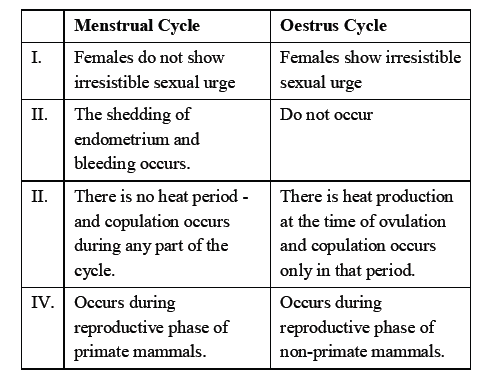Choose the correct one.
Optic nerve is the shortest
In amniotes the last cranial nerve is spinal accessory
In non-aminotes the last cranial nerver is vagus
Olfactory nerves have mixed fibres.
The correct Answer is:C
To solve the question "Choose the correct one," we need to evaluate each of the provided options regarding cranial nerves in reptiles and other vertebrates. Let's analyze each option step by step.
1. Option 1: "Optic nerve is the shortest."
- The optic nerve is not the shortest cranial nerve. The shortest cranial nerve is actually the trochlear nerve, which is responsible for eye movement.
- Conclusion: This option is incorrect.
2. Option 2: "In amniotes, the last cranial nerve is spinal accessory."
- In amniotes (which include reptiles, birds, and mammals), there are 12 pairs of cranial nerves. The last cranial nerve in amniotes is the hypoglossal nerve, not the spinal accessory.
- Conclusion: This option is incorrect.
3. Option 3: "In non-amniotes, the last cranial nerve is vagus."
- Non-amniotes (lower vertebrates) have 10 pairs of cranial nerves, and the last cranial nerve in non-amniotes is indeed the vagus nerve.
- Conclusion: This option is correct.
4. Option 4: "Olfactory nerves have mixed fibers."
- The olfactory nerves are primarily sensory and are responsible for the sense of smell. They do not have mixed fibers (sensory and motor); they are purely sensory.
- Conclusion: This option is incorrect.
Final Conclusion:
Based on the analysis of all the options, the correct answer is Option 3: "In non-amniotes, the last cranial nerve is vagus."
---
- The optic nerve is not the shortest cranial nerve. The shortest cranial nerve is actually the trochlear nerve, which is responsible for eye movement.
- Conclusion: This option is incorrect.
- In amniotes (which include reptiles, birds, and mammals), there are 12 pairs of cranial nerves. The last cranial nerve in amniotes is the hypoglossal nerve, not the spinal accessory.
- Conclusion: This option is incorrect.
- Non-amniotes (lower vertebrates) have 10 pairs of cranial nerves, and the last cranial nerve in non-amniotes is indeed the vagus nerve.
- Conclusion: This option is correct.
- The olfactory nerves are primarily sensory and are responsible for the sense of smell. They do not have mixed fibers (sensory and motor); they are purely sensory.
- Conclusion: This option is incorrect.
Based on the analysis of all the options, the correct answer is Option 3: "In non-amniotes, the last cranial nerve is vagus."
Topper's Solved these Questions
- REPTILIA-CREEPING VERTEBRATESBOOK - DINESH PUBLICATION ENGLISHCHAPTER - REPTILIA-CREEPING VERTEBRATESEXERCISE - CHECK YOUR GRASP
10 Videos
- REPTILIA-CREEPING VERTEBRATESBOOK - DINESH PUBLICATION ENGLISHCHAPTER - REPTILIA-CREEPING VERTEBRATESEXERCISE - CHECK YOUR GRASP
10 Videos
- REPRODUCTIVE HEALTHBOOK - DINESH PUBLICATION ENGLISHCHAPTER - REPRODUCTIVE HEALTHEXERCISE - check your grasp
10 Videos
- RESPIRATIONBOOK - DINESH PUBLICATION ENGLISHCHAPTER - RESPIRATIONEXERCISE - CHECK YOUR GRASP
20 Videos
Similar Questions
Read the following statements and choose the correct ones.
(a) In algae and fungi , both gametes are mostly non-motile .
(b) In most of the organisms, Fertilization is external.
(c) In most of higher organisms, female gamete is stationary.
View SolutionRead the following statements and choose the correct ones.
A. Light always inhibits seed germination.
B. Optimum temperature for seed germination is 10-15degC.
C. Photoperiodism and vernalisation both are main phenomenon involved in flowering.
D. Vernalisation can shortens the period between germination and flowering.
View SolutionConsider the following statements.
I. Period of life span from birth till the developmentof reproductive ability is called juvenile period.
II. Reproduction flourishes in maturity.
III. Tissue deterioration is a sign of senescence
IV. Death marks the end of all the phases of life.
Choose the correct ones.
View SolutionStudy the lists and choose the correct ones I II III(a)Sea UrchinAristotle's lanternEchinoidea(b)Sea CucumberRespiratory treeHolothuroidea(c)Sea BiscuitAnus is absentAsteroidea(d)Sea StarPedicllaria with two jawsOphiuroidea
View SolutionChoose the correct answer
Which one of the following does not affect the rate of transpiration ?
View SolutionRead the following statements and choose the correct one(s). A. During DNA replication, Adenine pairs with Uracil B. Chargaff's rule is applicable only for double stranded DNA. C. The area with long sequence of short repetitive DNA is called satellite DNA.
View SolutionFrom the differences given between oestrus and menstrual cycle, mark the correct ones.

Choose the correct codes.
View SolutionChoose the correct wrt. Plasmodium
View SolutionChoose the correct answer
View SolutionChoose the correct molecule for glucose.
View Solution
